Each creation at the Canadian Sculpture Centre’s Kudos II stood out in their own unique way. Each artist present spoke about how their pieces developed both as individual work and as part of their oeuvres. Many artists delved into the process in which their work came into life, feeling strongly that their original thoughts went through stages of changes.
Artist J. Mac’s “The Last Dryad” displays the last dryad – on a base of metal rather than the typical depiction in front of wood. She discussed how dryads exist to protect forest and trees but in our time less and less trees are left. That’s why the rope figure is against a metal rather than a wood backdrop. J. Mac chose this piece to represent a larger collection of her work that focuses on the dryads.
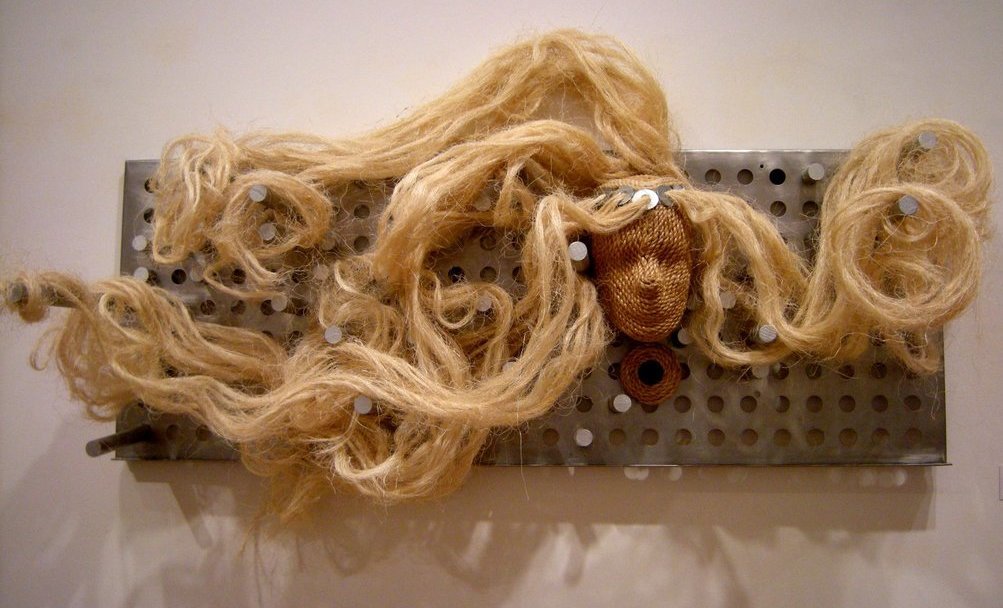 J. Mac, The Last Dryad, sisal rope, mixed-media. Courtesy of Canadian Sculpture Centre
J. Mac, The Last Dryad, sisal rope, mixed-media. Courtesy of Canadian Sculpture Centre
Thematically similar is Peter Shoebridge’s piece, “Run”. The terracotta figure in “Run” appears to almost fly off the wood. He did not know at first what material the figure would run out off. He decided on wood because he thought it represented the native woman’s world the best. His other piece also uses a woman figure, though it is a semi-3D sculpture, entitled “Listen”. Shoebridge talked about how the piece developed from a painting of a woman, titled “Touch” as well as his continued interest in exploring the human senses in the future.
Richard McNeill is interested in the use of the spiral. His large scale, mixed media sculpture, “Beacon of the Stream Passage”, represents the passages of life-cycle. It is the incorporation of many different series he has worked on earlier and brought together in this singular piece. It acts as a beacon, stream, portal pathway and regeneration sculpture all in one. The bronze elements depict the three streams, which lead to the guardian at the top as well as to the cosmic egg in the center. Whilst the guardian searches the skies the bronze eggs sits calmly against the rougher material and acts as a cosmic centerpiece.
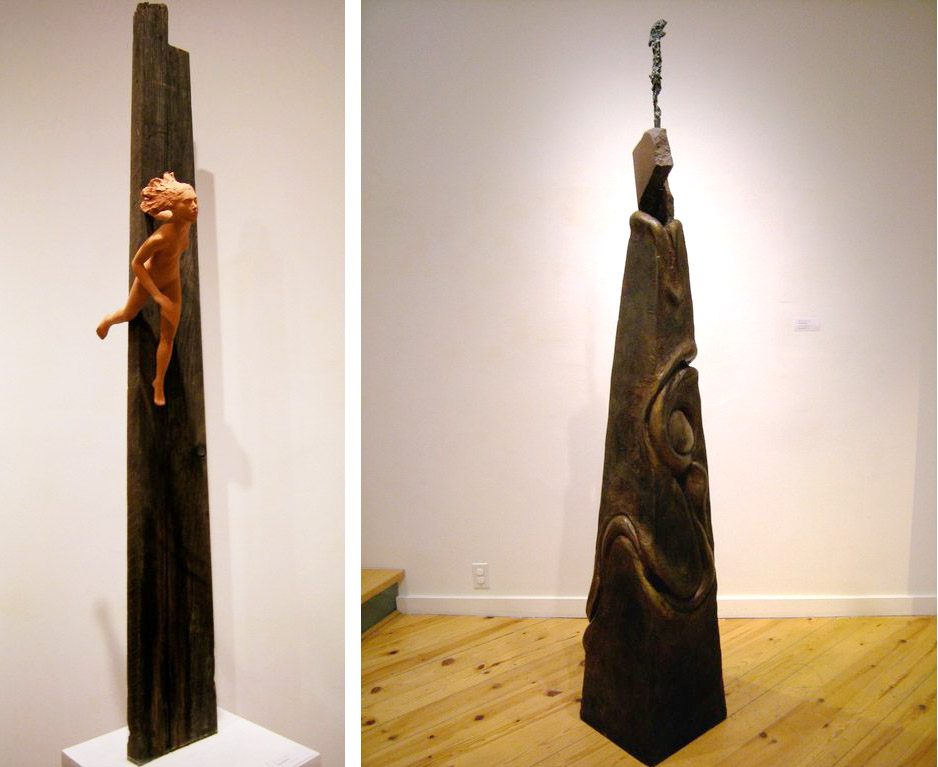 Peter Shoebridge, Run, terracotta, wood (left) and Richard McNeill, Beacon of the Stream Passage, alumina cement aggregate, bronze, sandstone (right). Courtesy of Canadian Sculpture Centre
Peter Shoebridge, Run, terracotta, wood (left) and Richard McNeill, Beacon of the Stream Passage, alumina cement aggregate, bronze, sandstone (right). Courtesy of Canadian Sculpture Centre
The exploration of the natural world moved thematically through the entire exhibition. Many of the artists have a unique sense of nature and interested in their own fundamental placement in it. Judy Raymer Ivkoff work concerns the physical world as well as rhythm, time, regeneration and fertility. “Origin”, evokes a sense of natural forces as well as the mysterious ways they act.
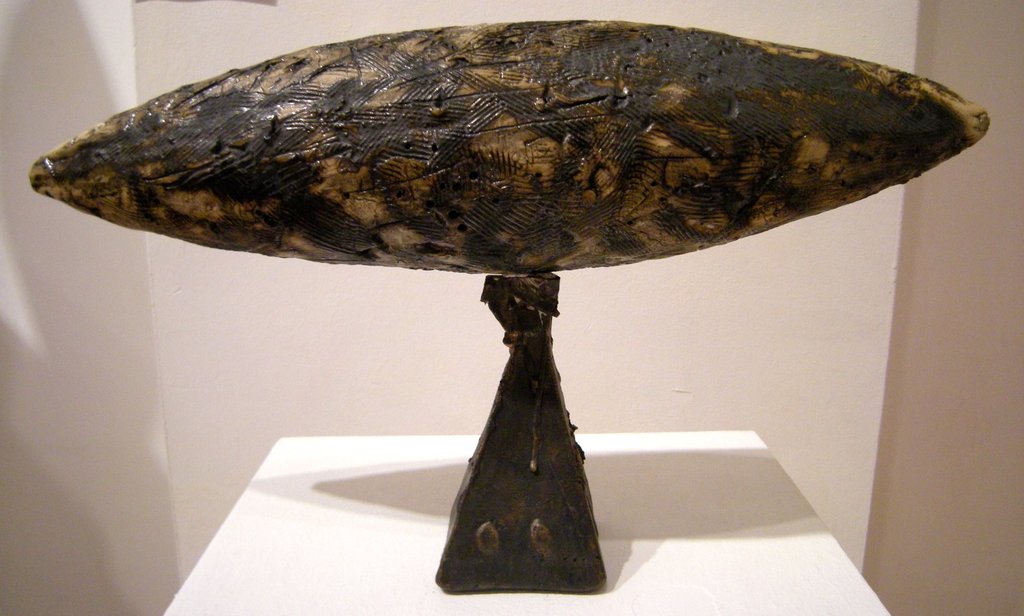 Judy Raymer Ivkoff, Origin. Courtesy of Canadian Sculpture Centre
Judy Raymer Ivkoff, Origin. Courtesy of Canadian Sculpture Centre
“Musicienne” by Saulius Jackus presents the allusion of a crouching woman based on a spiral figure. The placement of the figure allows it to be approachable and compelling from all angles. Typically Jackus works on realistic portraiture, however, for this occasion he chose abstraction as it allows for a more throughout exploration of contours. Karen Stoskopf-Harding’s “The Dissection of Lee-Ann” also addresses the creative process. She discussed how the piece began as a straightforward realistic portrait bust, but partway through she felt inspired to cut gouges out of it and see what would happen. As Stoskopf-Harding allowed herself to not worry about perfection she was able to create a far more interesting bust than she would have with a more traditional approach.
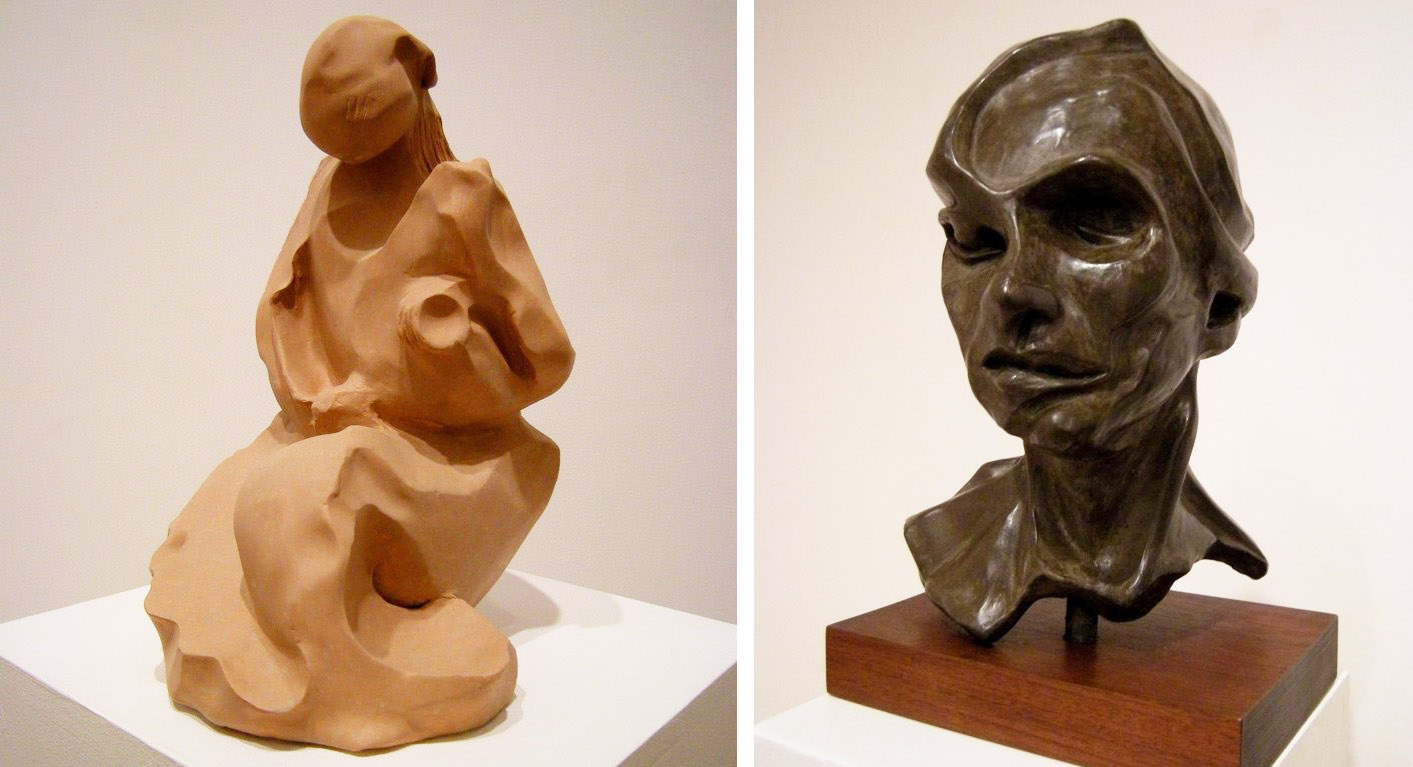 Saulius Jaskus, Musicienne, terracotta, pigment (left) and Karen Stoskopf-Harding, The Dissection of Lee-Ann (right). Courtesy of Canadian Sculpture Centre.
Saulius Jaskus, Musicienne, terracotta, pigment (left) and Karen Stoskopf-Harding, The Dissection of Lee-Ann (right). Courtesy of Canadian Sculpture Centre.
Peter Wirün explores history in his sculpture, “Gordian Knot”. It was inspired from a discussion he had about Greece’s present financial situation and the history of Alexander the Great. He explores the use of the Gordian knot, which represents all of the conquered nations’ troubles that were brought to a largely uninterested Alexander the Great. The country was crippled then and could be seen as financially broken as it is now. Part of Wirün’s sculpture is a pair of broken legs that act as a metaphor for this condition. There is also the addition of a plumb bob that hangs from the ceiling above the structure speaking of the artist’s need for truth and balance. Viewers can also see the Gordian knot as an embodiment of their own problems. Despite the analogous nature of the piece it does not necessarily need an explanation to be understood and appreciated. Judi Michelle Young’s sculpture, “Stop the Pain”, also turns to history by representing her family’s long history as one of the earliest Asian families in Canada. She recounted stories about how they came to build the railroad in the 19th century. The pins that shape the hands on the sculpture stand for the hands that built the road and the pain that resulted in it. She also works a great deal with numbers as the piece is done using segments of 9, symbolizing longevity and prosperity.
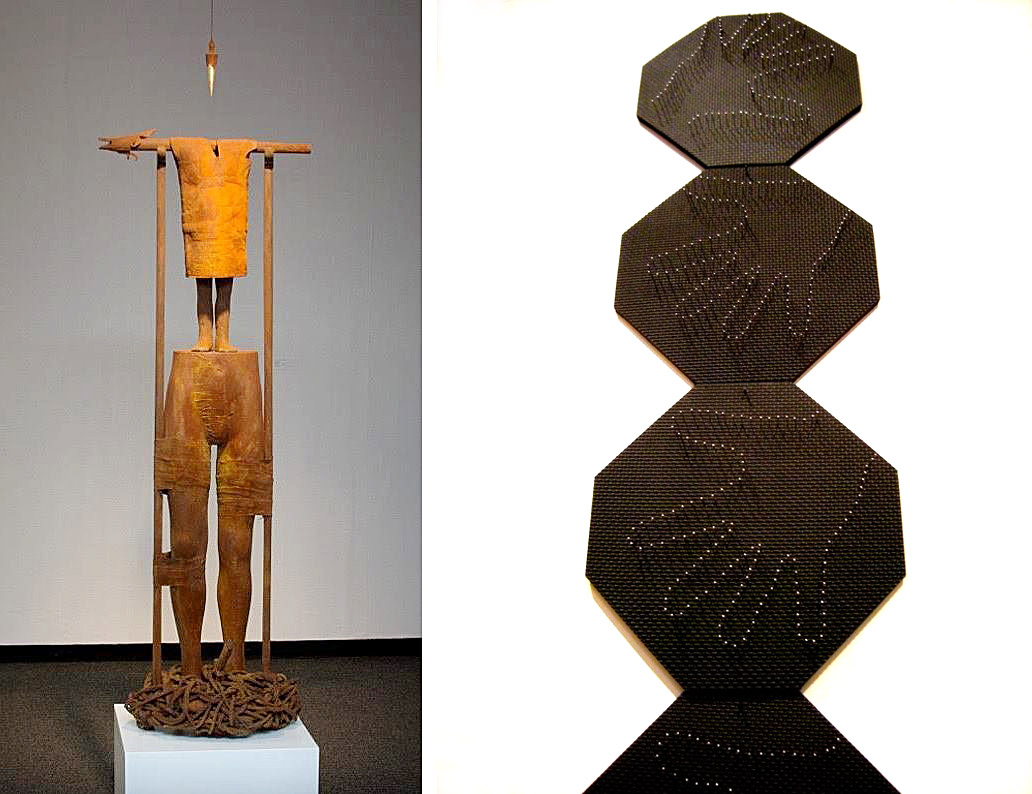 Peter Wirün, Gordian Knot – The Greek Dilemma, mixed-media (left) and Judi Michelle Young, Stop the Pain, latex, stainless steel (right). Courtesy of Canadian Sculpture Centre
Peter Wirün, Gordian Knot – The Greek Dilemma, mixed-media (left) and Judi Michelle Young, Stop the Pain, latex, stainless steel (right). Courtesy of Canadian Sculpture Centre
The interpretation of the past occupied many of the artistic pieces. In “Twilight” Marlene Kawalez explores the concept of historical tombs. The crouching woman comes from a place of loss as a result of aging. Kawalez spoke about how the darkest times can bring forth the richest creative energy. She described how in this work she really allowed herself to let go and embrace the artistry found in inner darkness. The artist’s involvement in this piece is obvious as it evokes strong emotions and – even without any interpretation – has an inherent sadness to it.
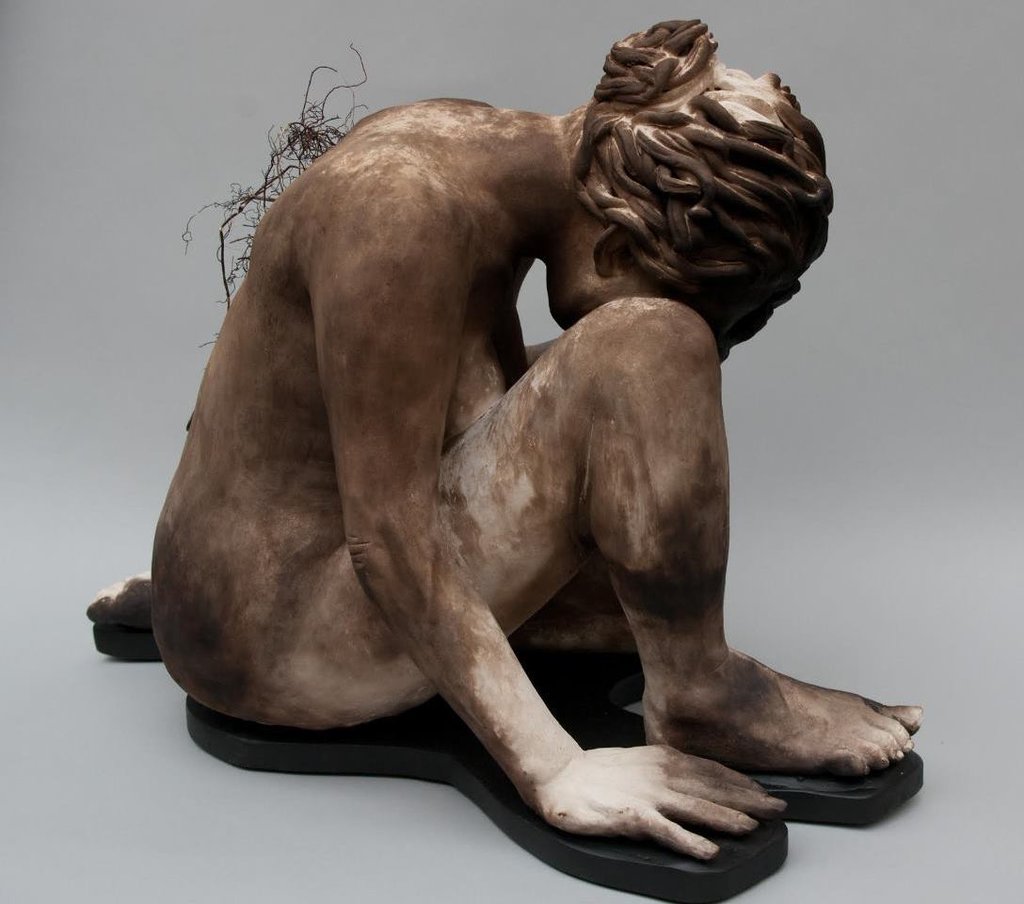 Marlene Kawalez , Twilight, clay, mixed-media. Courtesy of Canadian Sculpture Centre
Marlene Kawalez , Twilight, clay, mixed-media. Courtesy of Canadian Sculpture Centre
The exhibition featured many other artists who were not present to speak, but whose pieces were equally enjoyable. The show will be open to the public until February 5th – a must-see for anyone interested in sculpture.
Rhiann Moore
*Exhibition information: January 14 – February 5, 2015, Canadian Sculpture Centre, 500 Church Street. Gallery hours: Tue – Fri: 12 – 6, Sat: 11 – 4 p.m.
